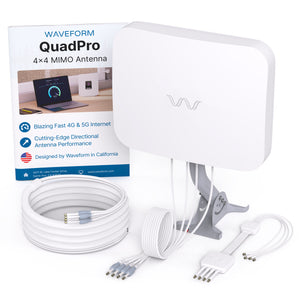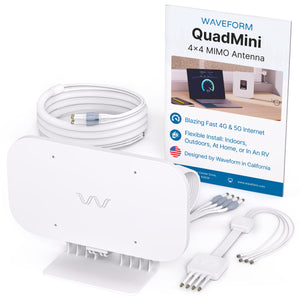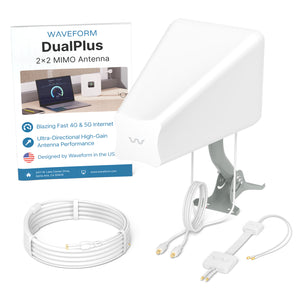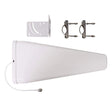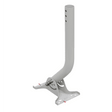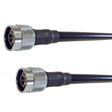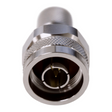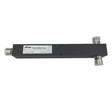Ohio's economy runs on movement. From Tier-1 automotive plants in the Toledo corridor to e-commerce distribution hubs around Columbus and Dayton, wireless dead zones slow daily output and raise safety risks. A midsized manufacturing campus in Lordstown, for example, may have dozens of autonomous forklifts roaming 500,000 square feet of mixed indoor and outdoor space. WiFi drops and public-cellular congestion can bring that fleet to a halt. A private 5G network eliminates those bottlenecks.
Why Ohio Facilities Turn To Private 5G
Ohio's industries span heavy manufacturing, food processing, advanced logistics, higher education, and healthcare. Each sector faces challenges that WiFi 7 or public LTE cannot solve.
-
Manufacturing & Automotive
Steel buildings in places like Youngstown are notorious for radio reflections. WiFi operates at low power and is quickly swallowed by metal walls. Private 5G CBRS spectrum allows higher transmit power and far fewer access points, so line-side tablets and machine-vision cameras stay connected.
-
Warehouses & Distribution
Ohio hosts more than 128 million square feet of fulfillment space near Interstates 70 and 75. Pallet racks create RF "canyons" that cripple WiFi roaming. A single private-cell site can cover an entire 1.5-mile campus, providing seamless handoff for scanners, AGVs, and yard-management tablets.
-
Healthcare & Research
Facilities in Cleveland's medical corridor need deterministic latency for wireless IV pumps and telemetry. Private networks let IT teams slice bandwidth and prioritize traffic, something impossible on public 5G.
-
Higher Education & Stadiums
Universities in Athens and Cincinnati want student devices on WiFi but prefer to keep facilities operations, security cameras, and ticketing handhelds on their own isolated network. CBRS lets them do that without running a second WiFi overlay.
Weather is another local factor. Lake-effect snow and spring thunderstorms can soak outdoor APs. Industrial-grade small cells rated to IP67 survive those conditions and continue broadcasting, while WiFi enclosures often fail.
For city-specific insight, visit our pages for
Cincinnati,
Cleveland, and
Columbus.
How Private 5G Stacks Up Technically
Private LTE and 5G run in the Citizens Broadband Radio Service (CBRS) band at 3.55 to 3.7 GHz. Because the spectrum is lightly licensed, your company receives its own clean channel with 40 MHz or more of bandwidth. Compare that to:
-
Public 5G from AT&T, Verizon, or T-Mobile
You pay per SIM, share the carrier's spectrum, and backhaul traffic through the public cloud. Latency climbs and you have no way to guarantee coverage on every inch of your site.
-
WiFi 6/7
WiFi uses unlicensed bands flooded by consumer devices. It transmits at 200 mW or less, which means you need dozens of APs to cover a railyard, then you still battle co-channel interference.
Private 5G transmits at up to 47 dBm (about 50 W EIRP) under a General Authorized Access license. One outdoor radio can blanket 50 to 100 acres. Better yet, the network core lives on-premises, so application latency drops to single milliseconds. You can implement QoS policies, SIM-based authentication, and slice bandwidth for specific robotic fleets or cameras.
For an in-depth primer, see our Private Networks Guide.
Our End-To-End Deployment Process
-
Rapid Site Snapshot
Send us a site plan, square footage, and device list. Within three business days we return a high-level RF design, sample coverage heatmap, and budget range.
-
Detailed Engineering
If the snapshot meets your goals, we run a full propagation model and craft a bill of materials using vendor-neutral gear from Celona, Baicells, Airspan, or others. You see every component and its purpose.
-
Turnkey Installation
Our field crews mount small cells, integrate on-prem cores, and commission user equipment ranging from Peplink gateways to Zebra scanners. Because we handle both radio and device onboarding, you avoid finger-pointing between vendors.
-
Ongoing SLA
Round-the-clock remote monitoring, quarterly firmware updates, and an optional spares pool keep your system resilient for years.
Need something temporary? We also offer "network-in-a-box" kits that arrive pre-configured and go live in under an hour.
Proven Experience In Complex RF Environments
While most of our Ohio work is under NDA, you can see the caliber of our team in nearby projects. One recent wireless deployment at a professional sports practice facility in New York required seamless coverage across indoor fields, weight rooms, and executive offices. You can read the case study here. The client, a major league organization, chose us for our vendor-agnostic approach and ability to integrate both the RF layer and user devices.
Transparent Pricing
Indoor private 5G deployments typically fall between $1.00 and $2.50 per square foot turnkey, including design, equipment, installation, and first-year support. Outdoor projects are often even more cost-effective. In flat terrain, a single macro-grade CBRS radio covering a 1.5-mile radius can come in around $100,000, all-in. Because you own the network, there are no recurring per-line fees. Over a five-year horizon most customers see total cost of ownership drop by 40 percent compared to public cellular data plans.
Take The Next Step
Waveform removes the guesswork from private cellular. From the RF plan to the handheld scanner, you get one accountable partner. Call us at (800) 637-4049 or get a custom private 5g design and quote today.























